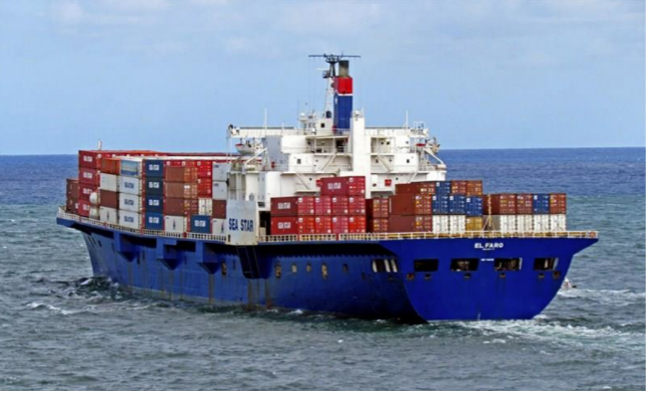Download PDF
RCA TRAINING
Root Cause Analysis training by Sologic provides the tools, skills, and knowledge necessary to solve complex problems in any sector, within any discipline, and of any scale. Learn MoreSOFTWARE
Sologic’s Causelink has the right root cause analysis software product for you and your organization. Single users may choose to install the software locally or utilize the cloud. Our flagship Enterprise-scale software is delivered On Premise or as SaaS in the cloud. Learn MoreA combination of causes led to the sinking of the El Faro cargo vessel. The captain unknowingly navigated the ship into the heart of a category 3 hurricane, downflooding occurred in the cargo holds, and the main engines shutdown leaving the captain with no way to steer or control the ship.
Although there are several systems that could be used by crew to receive weather reports while on the water, the captain of the El Faro preferred Bon Voyage System (BVS). BVS information was typically ~6 hours old and sometimes the captain didn’t download the information immediately causing the information to be more outdated. The owner of the El Faro, TOTE Maritime, did not provide adequate training to make the captain aware that the BVS weather information was at a minimum 6 hours old. Additionally, the El Faro did not have a properly functioning anemometer which is an instrument that measures wind speed and direction. The crew had no way of knowing real time conditions while at sea.
As waves and extreme rocking allowed water to enter the hull through air vents, water continued to flow down into the cargo areas through open scuttles. Scuttles, which are typically small round hatch-style openings between cargo decks, are required to remain closed when not in use. Once water entered cargo areas with vehicles, the water encouraged vehicles to slosh around causing them to break free from their securement chains. Unsecured vehicles struck and severed fire suppression piping causing more water to flood the cargo area. There were no physical barriers around the piping to prevent potential impacts. No attempt was made to stop the flow of fire suppression water once it began. The downflooding exceeded the bilge pump capacity. As cargo holds filled with water the ship sat lower in the water allowing more water to enter the ship through open side vents.
The El Faro began to have a sustained 18˚ list to port. The captain transferred ballast in an attempt to correct the list. However, these movements in combination with extreme rocking from the weather likely caused a chain reaction of events. Air entered the lube oil service pump causing a loss of oil pressure which caused the main engine to shut down. Without propulsion, the Captain had no way to steer or control the vessel.
The captain ordered all crew to abandon ship and board the lifeboats. The El Faro only carried open-style lifeboats. Open life boats were allowed in 1975 when the El Faro was built, but beginning in 1986, regulations required enclosed lifeboats that improve chances of survival. However, open lifeboats were grandfathered in on ships delivered prior to 1986 as long as they were maintained in adequate condition. Open-style lifeboats are designed to be deployed with a ship list less than 15˚. It is unlikely that the crew was able to board, launch, and survive in the open-style lifeboats in the hurricane conditions they encountered. The ship was also equipped with inflatable liferafts, but it is unlikely these could have been effective in the hurricane conditions. Sadly, no bodies were recovered. Although personal locator beacons are not required at sea, they could be used voluntarily by companies to assist with search and rescue and recovery efforts.
